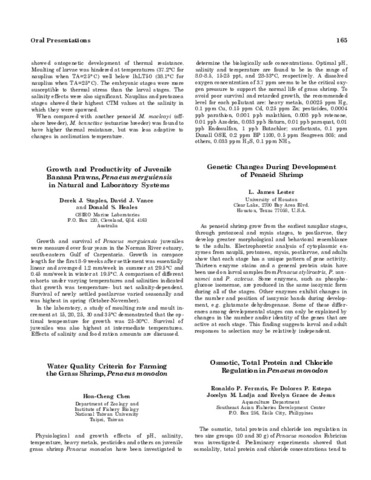Genetic changes during development of penaeid shrimp
Share
abstrak
As penaeid shrimp grow from the earliest naupliar stages, through protozoeal and mysis stages, to postlarvae, they develop greater morphological and behavioral resemblance to the adults. Electrophoretic analysis of cytoplasmic enzymes from nauplii, protozoea, mysis, postlarvae, and adults show that each stage has a unique pattern of gene activity. Thirteen enzyme stains and a general protein stain have been used on larval samples from Penaeus stylirostris, P. vannamei and P. aztecus. Some enzymes, such as phospho-glucose isomerase, are produced in the same isozymic form during all of the stages. Other enzymes exhibit changes in the number and position of isozymic bands during development, e.g. glutamate dehydrogenase. Some of these differences among developmental stages can only be explained by changes in the number and/or identity of the genes that are active at each stage. This finding suggests larval and adult responses to selection may be relatively independent.
Penerangan
Abstract only.
Suggested Citation
Lester, J. L. (1985). Genetic changes during development of penaeid shrimp (Abstract only). In Taki Y., Primavera J.H. and Llobrera J.A. (Eds.). Proceedings of the First International Conference on the Culture of Penaeid Prawns/Shrimps, 4-7 December 1984, Iloilo City, Philippines (p. 165). Iloilo City, Philippines: Aquaculture Department, Southeast Asian Fisheries Development Center.

